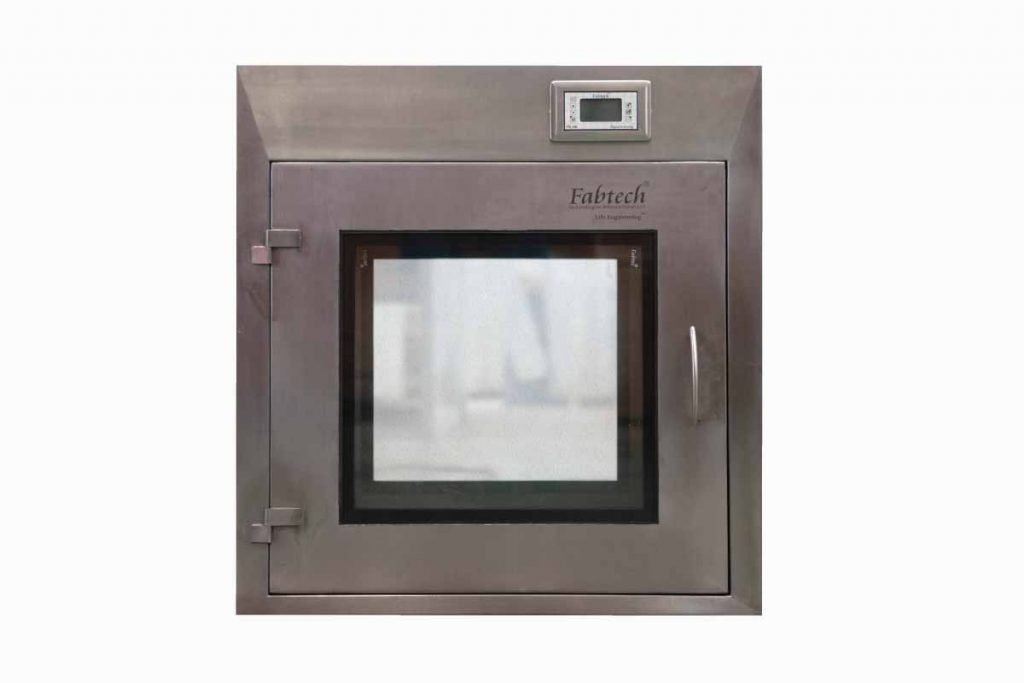Key differences between static and dynamic pass boxes

One of the systems commonly used in cleanrooms to minimise contamination is the pass box. As the name itself suggests, the primary and only work of a pass box is to pass materials from one side to the other, between controlled environments of different classes so as to avoid airborne cross-contamination. Should any particulate matter be present on the surface of the material being transferred, it is swiped away during the operation. The prime feature of a pass box is the interlocking door mechanism – when the door on one side is open the door on the other side remains closed. Pass boxes are known by different names including cleanroom pass through, clean transfer window and transfer hatch and are widely used in microbiology laboratories in food, pharmaceutical and chemical industries.
Cleanroom pass boxes come with different features and sizes, hence installing the right product is paramount. Here are some things to know when choosing the right cleanroom pass box for your facility.
A pass box is designed in two different types; static and dynamic and it is the user-specific requirement which decides the right design configuration.
The difference between these two are detailed below for your reference.
Static pass boxes are used to transfer materials between two rooms of equal cleanliness levels and are designed for minimal personnel movement while dynamic pass boxes are used to transfer materials from uncontrolled to controlled environments. Dynamic pass box works like an airlock or laminar air flow unit. Clean air enters in the pass box and prevents the entrance of the contamination. Dynamic pass boxes may be cascade, sink or bubble type similar to airlocks in pharmaceuticals.
The decision on which type of pass box to invest in must be made depending on the end requirements. When building a new cleanroom or for established cleanrooms, a dynamic pass box is a clear choice as it offers flexibility and can be used to transfer materials from uncontrolled to controlled environments. The inclusion of a HEPA filter and equipment for complex air handling help keep contaminants at bay and allow the cleanroom to achieve higher clean certification.
Static pass boxes are ideal when ventilation is not required – primarily for moving non-sensitive products between two cleanrooms of equal cleanliness. Static pass boxes must never be used to transfer material between clean and non-clean rooms.
Whichever type of pass box suits your need, choose one with flat surfaces so it is easier to clean and maintain. If the standard material of construction is not stainless steel, be sure to request for a material that does not adversely react with chemicals in cleaning products.
Your pass box should be integrated with the cleanroom wall system. It should be durable, aesthetically pleasing and sit flush to the cleanroom walls, so the accumulation of dust is completely avoided.
Interlocking is a critical safety feature of any pass box. There should be an indicator light to signal when the door at the other end can be opened
Pass boxes have an air pressure drain to keep air pressure under control and maximise safety, and a UV light for enhanced protection and destruction of pathogens. The ultraviolet light is controlled by interlocking arrangement and is turned off whenever any of the doors are opened
Fabtech’s pass boxes have a re-circulatory air system with a certain percentage of air intake as fresh air to keep it under positive pressure. It has a microprocessor-based controller to manage door interlock, UV light–hour metre, door open delay and other application based requirements. Validation is per ISO / IEST RP with air flow visualisation and specific execution based on application. The material of construction is SS304.
Categories
Recent Posts
Subscribe
Never miss a post from Fabtech. Sign up to receive updates direct to your inbox.
